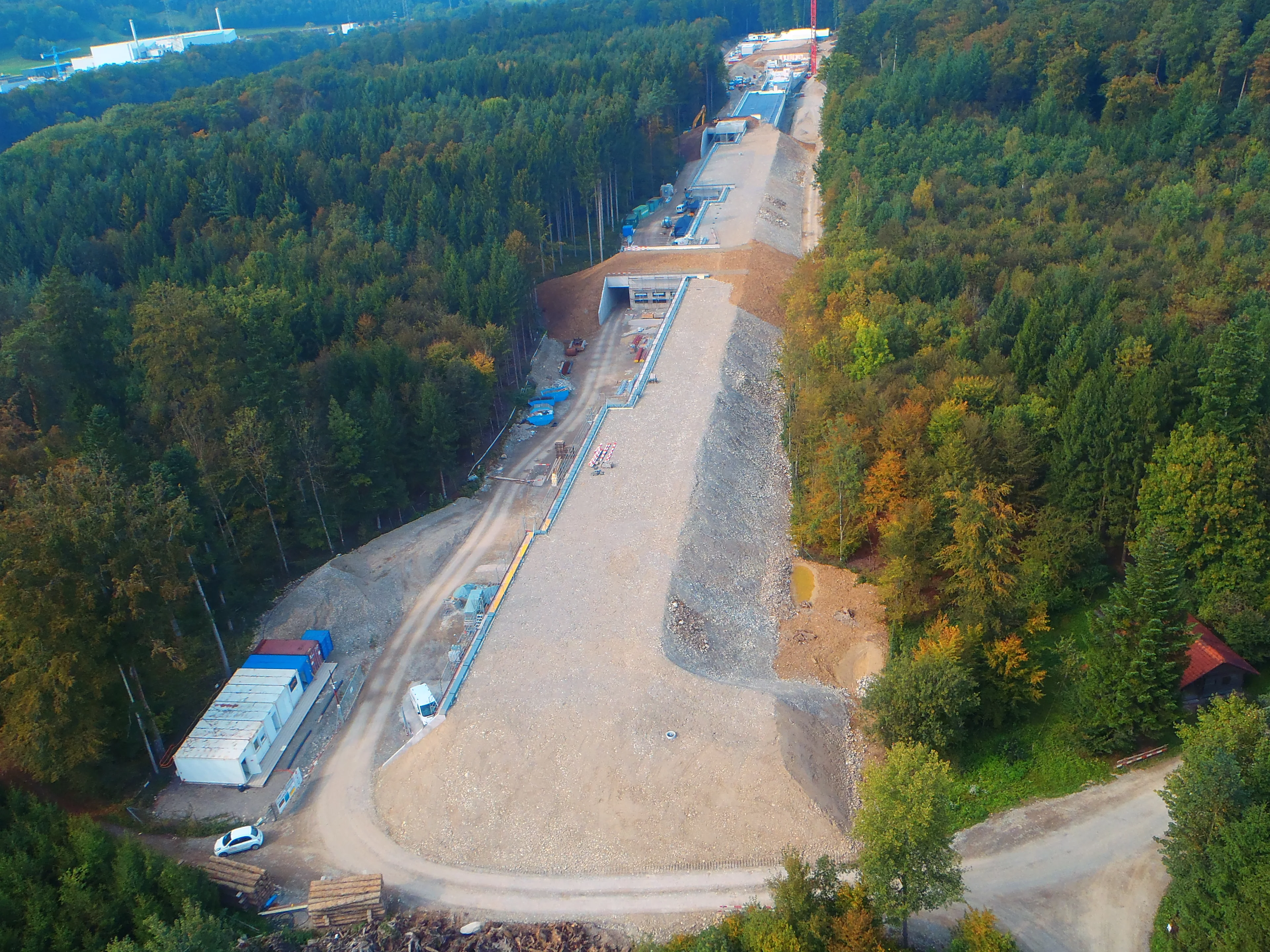The building of the new PSI large research facilities SwissFEL in Würenlingen forest could only enjoy the sunshine for a brief spell: it is now disappearing under a mound of earth. This superstructure is one of the measures taken to integrate the facility as harmoniously as possible into the natural environment.
By the end of Autumn, the SwissFEL building will have almost completely disappeared under a mound of earth. The mound will be covered by a dry meadow – a natural landscape indigenous to Aargau. Furthermore, there will be two wildlife crossings planted with shrubs and providing a wildlife crossing zone. They will allow the indigenous wildlife in the forest like deer, foxes and wild boars to safely cross the 740 meter long area at several locations without being disturbed.
The operation of the facility is likewise designed to disturb the wild animals as little as possible. This will be ensured by soft lighting of the access pathway integrated into the forest park. It will be activated when needed and only light up the area of the pathway. The internal facility area on the west side will be hidden behind a cultivated strip of forest and a dense hedge.
Targeted landscape planning
SwissFEL is not only to be integrated as harmoniously as possible into nature - concerted efforts are also being made to create new habitats for rare animals and plants.
Here the focus is on endangered species in the region. For example, the low-nutrient dry meadow with its diverse vegetation, interspersed with sand basins as potential nesting sites in the direct vicinity of the forest boundary, provides suitable habitats for indigenous wild bees like the Great Banded Furrow-bee or the Cuckoo Bee.
Depending on their lifestyle, wild bees have different requirements in terms of nesting sites and forage plants. Given their often highly specific needs, they react extremely sensitively to changes in their habitat and are, therefore, increasingly endangered.
Critically endangered rare butterflies like the Black Hairstreak, the Purple Emperor or the Large Tortoiseshell are also indigenous in the region. For these butterflies, forest boundary bays and groups of bushes with their principal forage plants are being created. They include Goat Willow, Blackthorn and Privet.
Habitats for endangered amphibians
Special attention is paid to habitats and cross-linked opportunities for amphibians. Amphibians are one of the most endangered animal groups in the world and are strictly protected. The loss of their spawning waters and land habitats, coupled with the isolation of their populations, has led to a major decline in the numbers of indigenous amphibians such as the Yellow-bellied Toad and the Common Midwife Toad. They are, therefore, dependent on alternative habitats. Several spawning ponds are being created in the environs of the SwissFEL to cater to this need. Nearby piles of stones provide an ideal sanctuary.
Furthermore, there are plans for about 30 small water bodies to act as stepping stones
to known amphibian populations in the region. The goal is to counteract the isolation of amphibian groups and encourage intermixing.
Step by step to a new landscape
The work on the area around the SwissFEL building already began two years ago with the first woodland clearance. The area for the forest park was then opened up. In the Spring of this year, the first forest plants from the Würenlingen forest, including Male Fern, Periwinkle and the sedge Carex pilosa, were planted.
When you visit the site, you still only see a mound of earth. However, on the first 260 metres, the seeds have already been sown for the dry meadow. And soon the first green shoots will appear. Work has also begun on the amphibian ponds.
An interdisciplinary expert team was commissioned by the Paul Scherrer Institute to develop a concept for the best possible integration of the SwissFEL into its environment and to develop, in a two-year project, the above measures. The goal was to keep any intervention in nature and the landscape to a minimum and to create ecological added value. The team of experts is also involved in the implementation of the facility environment concept.
Text: Paul Scherrer Institute/Martina Gröschl

